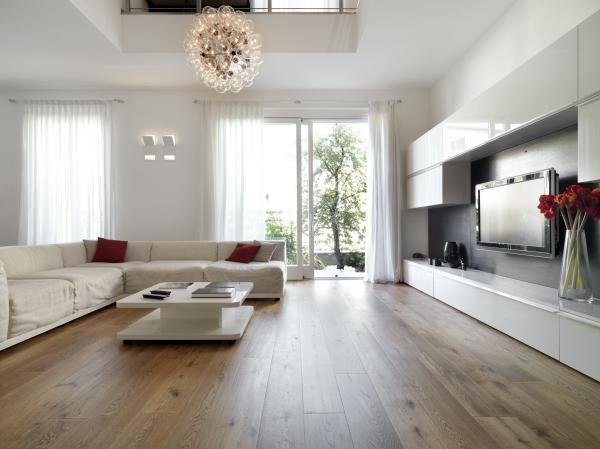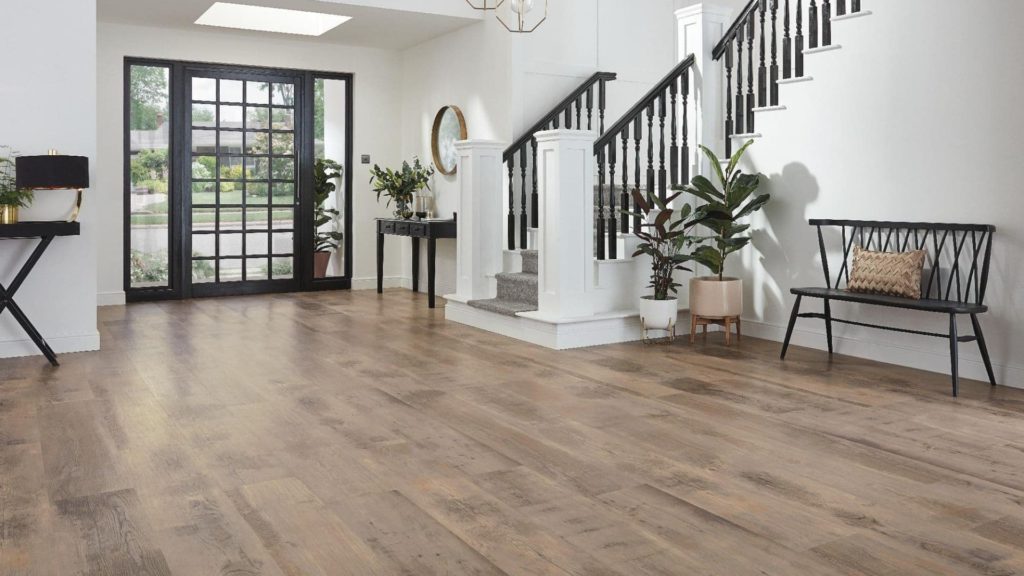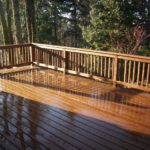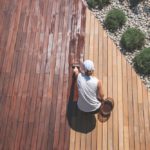
If you are looking to save some cash, and you do not want to use chemicals in the cleaning process, then we can show you how to shine your hardwood floors naturally. If you are looking to get hardwood floors shining, then you will need to use the proper tools and products for cleaning the floor.
If your floors are not brand new, or if you cannot check with the floor manufacturers, choose products specifically designed to clean wood floors. Your best option is to get a hardwood floor cleaner that will clean and maintain most wood or laminate floors, particularly in areas where there is lots of foot traffic. Even if you are adept at adding a bit of gloss to your hardwood floors, using an overly-powerful cleaning solution or water is going to leave your floors looking worse.
Clean floors with your hands and knees using a sponge and a gentle floor cleaner, which will help keep your shine. Go over your floors using a dust mop that has been sprayed with timber floor polish, which will help pick up any remaining dust and dirt, and will help maintain the shine between cleans.
Empty your room, remove any furniture you can, and then thoroughly sweep your floor with the polishing compound to get rid of any dust and dirt. Arrange the furniture in the room so it allows for easy cleaning of the floor with no obstacles. After removing all the furniture from the room, the first step of any hardwood flooring cleaning process is making sure to remove all of the mud and debris from the floor by brushing and vacuuming.
Dirt can be redistributed just by using a messy wet mop, or forgetting to sweep, vacuum, or dust mop your floors prior to the clean-up. To minimise the need for a damp mop, use a dust mop or a dry microfiber cloth to perform regular floor cleaning. An easy way to ensure that you do not have to mop dirty floors is by keeping your floors clean in the first place.

Before thinking about using another cleaning product or chemicals, try mowing your floors with plain water. If the floor is extremely dirty, then a mild cleaner may work better at getting dirt out of the floor. Once your floor is cleaned and dry, use a floor restoration product called Rejuvenate to rebuild the floor.
Cleaning floors can be challenging, especially when you are trying to return it to its original look that is free of stains.
Use the cleaning solution and a microfiber mop to clean hardwood floors completely, working your way around the room while scrubbing.
For the best hardwood floor deep clean (consider doing this clean just in spring, or right before winter holidays), use the hardwood floor mop and a hardwood floor cleaning product that is dilute according to label instructions. For a quick cleaning, dust your hardwood floors using a dusting agent-treated mop that will catch the dust, dirt, and pet hair that can scratch your floors surfaces.
Follow your mop manufacturers recommendations about using a timber floor cleaner or dusting agent; some mop products do not need additional cleaning agents. All you need is a flat-head mop containing a microfiber cleaning pad and commercial wood floor polish, available with either a low-gloss or high-gloss finish, to get your desired finish.
If you have laminate floors, you may want to consider this DIY cleaning solution, which uses water, vinegar, and dish soap, plus a microfiber mop or sponge. If you are worried about using water on wood floors, or water is not recommended for the type of finish your floors are, you may be interested in this DIY solution that uses just vinegar and cooking oil. The best wood floor polishers use vinegar to get rid of dirt, and vegetable oil keeps your wood from drying out and allows it to retain its shine.
Using a wood floor cleaner made from a gallon of hot water and 1/4 cup of dish soap, scrub your floor with the product to get rid of any gunk. You want to be sure you remove as much of the soap from the floors as you can so that there is no tarnish or fading on the wood. Sweep or vacuum, and then use either a commercial wood floor cleaner or a solution of one-fourth cup of dish soap and one gallon of hot water to scrub away any remaining gunk.
For dirtier floors, mop your floors with plain vinegar before applying this DIY cleaning solution and conditioner. Pour undiluted vinegar into a spray bottle, lightly mist a small area of your floor, then use a cloth mop to clean it.
You want to make sure that your floor is clean from any mud, dirt, and residuals, because that will help the rejuvenator to reach all pores and small scratches. Do not use concentrated cleaners when cleaning your floors, as this can dull that lovely shine, as well as potentially leaving a smudge mark on your floors once it is dry.
Water may be used to clean wooden floors, but one should take care that none of the water is left behind, as it can make the flooring spongy. Wood floors are known to be relatively low-maintenance, and a lightly wet mop with just a little hot water is usually all you will need to perform regular cleaning. Sometimes, when I am crunched for time, or have a party to host and have to get my floors prepped for in 30 minutes, I start using this Rejuvenate Mop & Clean for Hardwood Floors, which you can pick up at Bed Bath and Beyond.
Think of the amount of dust, grit, and debris that will build up in your cleaning solution rather than just sitting on your floor’s surface. Skip any DIY cleaning solutions involving diluted vinegar or ammonia for wooden floors–all they do is degrade the surface-finished finish.









